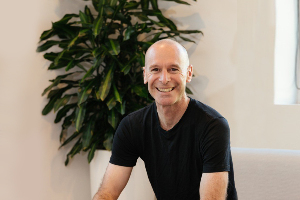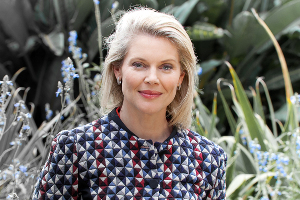
As potential new homeowners struggle with saving a decent deposit a mortgage adviser can put before a bank in a loan application, Squirrel Mortgages has taken a swipe at how much profit banks are making from savings accounts.
CoreLogic data shows the time required to save a deposit measure, based on median property values and household income, was 10.2 years in the second quarter of last year, down from 13.6 years in the fourth quarter of 2021. The average is 9.1 years.
This could be reduced if the major banks increased the interest rates on their ‘simple’ savings products.
Squirrel Mortgages chief operating officer Dave Tyrer has laid out how simple savings products on the market compare?
Most look much the same, until it gets to the all-important interest rate, he says.
“And to put it simply, that comes down to how the banks set their margins."
Banks earn interest on the customer deposits they hold. The majority is lent out to borrowers in the form of different loans—mortgages, business loans, credit cards—where the gross interest rate varies by loan type, currently ranging from about 5.5% up to about 23%.
Then, the remaining portion is held with the Reserve Bank—where it earns an interest rate set at the Official Cash Rate (OCR), now at 4.25%. That’s the minimum.
The gross margin is calculated as the difference between what banks earn on funds (either from the RBNZ or by lending it out to borrowers) and the returns they pay customers (depositors) and wholesale funders.
The net interest margin, also known as bank profit, is the gross margin less any operational costs associated with the running of that account.
Banks have full control over the interest rate they pay their savings customers—and therefore the margin they’re making—which is why there is such huge variance between different providers, Tyrer says.
Lenders’ disparity
Why is there such a gulf between lenders?
As a hypothetical example, Tyrer assumed the average balance in an ASB and Squirrel savings account is $5,000.
He assumed ASB is doing nothing with those funds other than holding them on trust with the RBNZ, earning an interest rate of 4.25% p.a. Squirrel earns a similar amount on the deposits held on behalf of its investors.
In other words, ASB passes less than half of the interest earned – just 39% to be precise – onto its customers, keeping 61% for itself.
And that’s the best-case scenario, Tyrer says.
“It would be interesting to hear the chief executives of the big banks defending how they set their simple savings interest rates.”
“If ASB loaned some of that money out to borrowers in one form or another, its margin will be even higher.” Squirrel does not lend out money held in it On Call account. It holds the funds with two AA- rated NZ banks
“Although all providers do have operational costs which somewhat offset that interest, even once those are factored into the equation, the difference between ASB and Squirrel is still significant.”
He says ASB is not alone – it is similar story at both ANZ and Westpac, which each offer even lower interest rates on their simple savings products. BNZ and Kiwibank, meanwhile, do a comparatively better job of passing on those interest earnings to their customers.
Scaling it up to a national level, Tyrer says from RBNZ data it is known that Kiwis have about $107 billion stashed away in bank savings accounts.
“The numbers and assumptions won’t be perfect, but – leaving big business out of the equation – let’s assume that about $90 billion of that figure is made up of household and small business savings.
“For the purposes of this exercise, we’re looking just at the proportion of funds held in ‘simple’ savings accounts (excluding ‘bonus’ and ‘notice’ saver products) because those accounts tend to offer significantly lower returns for the customer.”
It is estimated the ASB, ANZ and Westpac have a combined 68% share of the consumer and small business savings market, with $9 billion in simple savings accounts of the total $61 billion in total savings balances.
Tyrer says assuming those funds in simple savings accounts are held with the RBNZ – earning returns of 4.25% p.a. – they would be returning $383 million, but the three banks are keeping $240 million for themselves, while passing on just $138 million to their customers earning an average interest rate of 1.53%.
Savers better off
“I’ve said it before, New Zealand’s biggest banks make their super profits by holding deposit return rates down, not by over-charging on lending interest rates,” he says.
While Squirrel is not a bank but is instead a big non-bank lender, Tyrer says if that $9 billion was held in its On Call accounts, savers would be getting a 4% interest rate, with $360 million paid out and just $23 million kept as a gross margin by the business.
“I’ve said it before, New Zealand’s biggest banks make their super profits by holding deposit return rates down, not by over-charging on lending interest rates.”
He says it would be interesting to hear the chief executives of the big banks defending how they set their simple savings interest rates.
To help highlight the issue, Tyrer says a FMA mandate requiring savings account providers to show their margin against the OCR would provide a simple benchmark.
There is however, some good news, he says. A handful of New Zealand-based fintechs, including Squirrel, have launched their own savings products in recent years and as these smaller players gain traction, they’ll eventually become large enough that the big banks will have to take notice – likely resulting in deposit rates going up, and causing them to increase lending rates as well to compensate.
The FMA has also launched a pilot regulatory sandbox so it can partner with fintechs, start-ups and other established businesses to test new innovative products and services.





Comments
No comments yet.
Sign In to add your comment